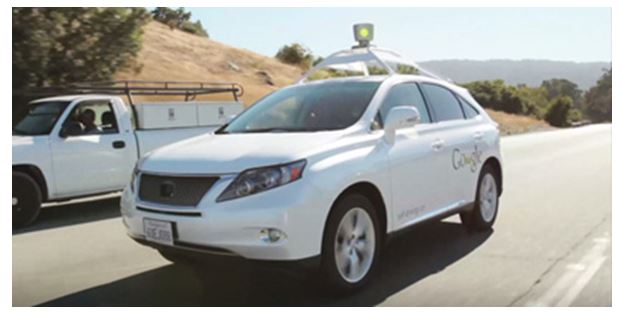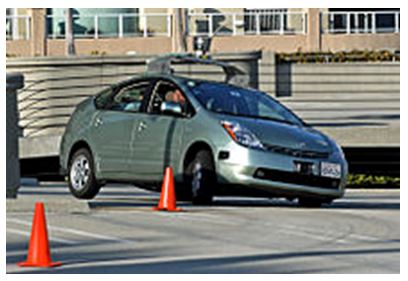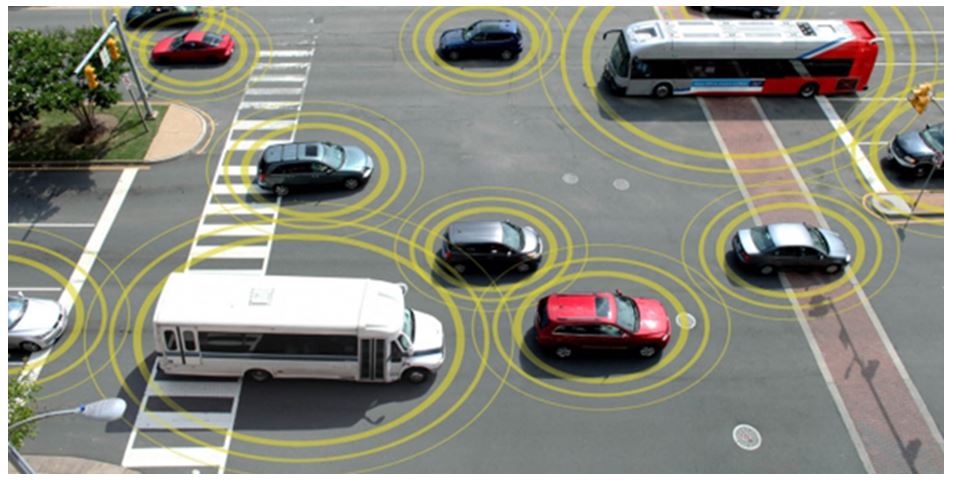Introduction

The automobile industry was a significant game-changer in the 20th century in terms of technology. It is also safe to assume that the changes that are expected to happen in the automobile industry over the next twenty years will exceed the magnitude of the developments that have occurred over the last century. For instance, over the last century cars have had standard features that have included an engine, a steering system, and a driver element. However, recent developments in technology have brought about ‘unimaginable’ additions to a standard automobile. Some of the technologies that are altering the face of the automobile industry include Global Positioning Technology (GPS), high-resolution imaging, infrared and radar scanning, and single platforms that can incorporate all this technology. When all these technologies are put together, they result in the autonomous car. The autonomous car is the standard name of the technology that brings about self-driving, driverless, and robotic cars. Autonomous vehicles have the capacity of carrying out normal transportation duties without the input of a human being. Like several other futuristic technologies, the autonomous vehicle in its current growth trajectory has threatened to replace human drivers in the next two decades. Several companies have produced prototypes of autonomous vehicle technology including Tesla and Google Inc. This paper explores autonomous vehicle technology and how it is expected to replace human workers within the next two decades.
The Autonomous Vehicle Technology
There are several angles when it comes to autonomous vehicles technology. However, self-driving vehicles are fast becoming a reality in the current technological environment. For instance, recently the tech giant Google announced that it has covered a mileage of over half a million miles using autonomous vehicles. Consequently, some observers have noted that by the year 2020, self-driven cars will be quite common, especially in the developed world. Autonomous vehicle technology has been developed in line with several considerations including safety and prompt service. Experiments to test the viability of autonomous cars date back to the 1920s when this concept was first hypothesized. However, it was not until the 1950s that the dream of autonomous vehicle technology started becoming a reality. The first complete units to feature autonomous vehicle technology were completed in the 1980s through collaborations between car industries and learning/research institutions. As late as 1987, over twenty car makers were in the race for the production of an autonomous vehicle including Mercedes Benz, Nissan, General Motors, Audi, Toyota, and Peugeot. By the late 1990s, the race for producing a fully functional autonomous car had attracted information technology companies that are mostly located in the now-famous Silicon Valley in California. The year 2013 was the year when autonomous car technology came to a full revolution. Several companies debuted prototype technologies that feature fully functional autonomous cars including Tesla, Mercedes, and Bosch.

Furthermore, the legislative policies that govern the automotive industry began accommodating the testing and potential rollouts of self-driven cars. In states such as Florida, California, Nevada, and Michigan, some laws outline the testing and development of self-driving cars in respect to the existing public transportation systems. In other parts of the world, some governments have resolved to develop transport systems that solely serve driverless vehicles. According to expert predictions “2020 is the most often quoted time frame for the availability of the next level of self-driving vehicles, with wider adoption happening between 2040 and 2050” (Silberg 4).
How the Vehicles Work
The concept of autonomous vehicles works in different categories depending on the level of functionality of the final product. Consequently, the term autonomous vehicles can also be used to describe cars that still require some degree of human input in their functionality. In a recent research article on the status of autonomous vehicle technology, the author points out that manufacturers have started offering a clear demarcation in their definitions (Benenson 6). Consequently, proposals have been forwarded to use the term ‘autonomous vehicles’ to refer to machines that have both human-operated and automatic features. On the other hand, the proposal is to have the term ‘self-driving vehicles’ as the standard for all vehicles that are fully automatic and ones that do not have pedals or steering wheels. The overall functionality of a self-driven vehicle is determined by the need to eliminate instances of human error thereby improving safety and efficiency. Complete self-driving technology will feature “fully automatic safety-critical functions for the entire journey and the driver will not be expected to control the vehicle at any time from start to stop, and the vehicle can even be unoccupied” (Lari, Douma, and Onyiah 45). The most common technological approach in a self-driving car is to make sure that the vehicle does not depend on any external technology input during its operations. Consequently, the vehicle will in essence be ‘self-contained’ when it comes to command centers and power sources. Nevertheless, a self-driving vehicle can gather useful information from other cars although its core functionalities depend on internal installations. A self-driving car is expected to mimic the connectedness and operating system infrastructures of modern technology. Other features that are expected to be found in a self-driving vehicle include a car’s ability to set safe speeds and its interaction with traffic lights. Automatic vehicles are also expected to perform better in traffic-congestion environments. The car’s ability to avoid collision with others will also depend on the machine’s information collecting abilities. Debate is rife as to whether self-driving cars will require an overhaul of the current road infrastructure. However, most stakeholders agree with the fact that it is more practical to build an adaptive car that can operate on existing infrastructures. Overall, a self-driving car will feature some of the current vehicle technologies, sensors, and communicative elements.
Benefits of Autonomous Vehicles
The most significant benefit that is associated with autonomous vehicles is safety. The issue of safety in the automotive industry has always been a major concern for governments, individuals, and manufacturers. Self-driving vehicles come with the promise of high safety standards and capabilities and this is often a major selling point for this technology. It is estimated that over ninety percent of all road accidents are caused by human error (National Highway Traffic Safety Administration 4). Autonomous vehicle technology promises to eliminate accidents that are caused by human behaviors such as speeding, disregard of traffic rules, poor judgment, and other forms of incapacitation. Self-driving technology is also expected to curb the over 1.2 million deaths that are associated with global road accidents annually. In economic terms, self-driving cars are expected to reduce the cost of accidents and other road-related mishaps by at least seventeen billion dollars per year. Other economic benefits are associated with automated vehicles such as savings in fuel and decongestion costs. Self-driving cars are also expected to improve mobility and access among human beings. Currently, car usage depends on affordability and driving abilities. However, automated cars will make it possible for the elderly, children and disabled persons to access car transportation. Individuals who acted as drivers will also enjoy more flexibility because they can perform other roles in the course of their commute. Experts have also pointed out that self-driving vehicles will increase overall capacity in several ways. For example, “roadway capacity improvements will ensure that there is a maximum number of cars per lane and per hour” (Benenson 54).

The capacity for any infrastructure can be easily maximized in situations where vehicles are automated. Autonomous cars are expected to introduce diversity in terms of car designs. For instance, some automated cars may not require bulky features such as steering wheels, airbag systems, and pedals. The new car designs might make vehicles more efficient in terms of space and other consumer needs. A good example of how automated vehicle designs can look can be seen in Masdar City in the United Arab Emirates (Benenson 13). The designs of the driverless cars in Masdar City look like pods as opposed to them resembling the traditional car models. The benefits of autonomous cars are also expected to extend to the cost of ownership. The cost of owning a car normally depends on factors such as fuel, depreciation, interest rates, maintenance, taxes, and insurance. Factors such as insurance and maintenance costs are expected to be lower in the case of automated cars.
Impacts of Autonomous Vehicle Technology
Autonomous vehicle technology is considered an intrusive technology and it is likely to have far-reaching impacts. It is expected that self-driving will develop slowly just like other forms of technology, but it will have significant impacts on the job markets. Some workers are set to be completely replaced by autonomous vehicle technology. Some of these include individuals who drive buses, taxis, trucks, and other forms of public transportation. Furthermore, this technology is also set to make vehicle delivery personnel such as pizza and package delivery people outdated. Traffic controllers and policemen will also be non-existent when the autonomous technology becomes fully operational. Nevertheless, the technology will lead to the creation of new jobs including engineers and traffic monitoring individuals. Governments set policies for the rollout of any technology. In the case of automated vehicles, governments will have to change laws and policies to coincide with the concept of a driverless car. For instance, insurance and liabilities matters in case of accidents are expected to be passed on to car manufacturers and not owners. One observer notes that “The driverless car will change the intimate relationship that has developed during the 20th century between the user and their automobile….it will be an autonomous machine that does the user’s bidding in its own systematized way” (Swan 6). This social impact will also affect the ‘ownership’ element when it comes to motor vehicles. Cars without drivers might also compromise the privacy of their users but they might also improve the element of public security. When it comes to the environment, self-driving cars are expected to promote the current quest for use of renewable energy in motor vehicles. Manufacturers look forward to a time when the current reliance on oil will be phased out by a more affordable power alternative and the flexibility of autonomous cars might contribute towards the realization of this goal. The economics of land will also be affected by the institution of the self-driving car. For example, when using a self-driving car there is no pressure to reduce daily work commute. Consequently, congestion in cities will ease when individuals can get into a vehicle that drives them to work without any hustles. There have been numerous attempts to decongest urban areas, but autonomous vehicles might provide a lasting solution to this persistent problem. Due to constraints of parking space, most individuals find it difficult to use vehicles on a day-to-day basis. However, cars that can park themselves in far-away or less congested areas can eliminate this constraint.
Future Expectations
Various companies are in the process of finalizing their prototypes when it comes to autonomous vehicles. It is expected that most of the features that will finally be included in driverless vehicles will be first tested in the current car models. The final driverless vehicle is not expected to be complete for at least 15 years to come. The expected future developments in autonomous cars include the plans by carmaker Mercedes to “introduce “Autobahn Pilot” aka Highway Pilot, the system allows hands-free highway driving with autonomous overtaking of other vehicles by 2016” (Payre, Cestac, and Delhomme 255). In addition, Google expects self-driven cars to become available for sale to the public in the year 2017. In the year 2035, it is expected that there will be a significant number of unoccupied self-driving cars on the roads.
References
Benenson, Rodrigo. “Towards Urban Driverless Vehicles.” International Journal of Vehicle Autonomous Systems 6.1-2 (2008): 4-23. Print.
Lari, Adeel, Frank Douma, and Ify Onyiah. Self-Driving Vehicles: Current Status of Autonomous Vehicle Development and Minnesota Policy Implications, Minnesota: University of Minnesota, 2014. Print.
National Highway Traffic Safety Administration. Preliminary Statement of Policy Concerning Automated Vehicles, Washington, DC: NHTSA, 2013. Print.
Payre, William, Julien Cestac, and Patricia Delhomme. “Intention to Use a Fully Automated Car: Attitudes and a Priori Acceptability.” Traffic Psychology and Behaviour 27.1 (2014): 252-263. Print.
Silberg, Gary. “Self-driving cars: The Next Revolution.” Center of Automotive Research 7.1 (2012): 2-26 Print.
Swan, Melanie. “Connected Car: Quantified Self becomes Quantified Car.” Journal of Sensor and Actuator Networks 4.1 (2015): 2-29. Print.
Wired. “Autonomous Cars” Wired. Conde Nast, 2015. Web.